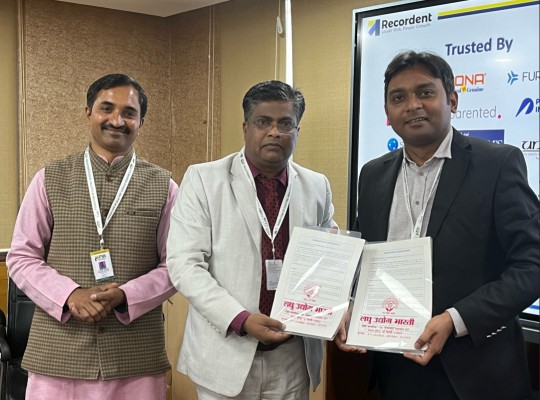Hydrogen peroxide, commonly used as a household disinfectant, also has a high-tech cousin: electronic-grade hydrogen peroxide. This super-pure version plays a vital role in the electronics industry, helping manufacture things like semiconductors and flat-screen TVs. It is considered as a critical cleaning solution in semiconductor manufacturing which ensures minimal contamination and optimal performance. However, while the final product might be in cutting-edge gadgets, its production process raises some environmental concerns.
The Green Paradox
Now here’s the catch: Hydrogen peroxide is itself considered as environment friendly. When it breaks down, it simply turns into water and oxygen, leaving no harmful residues. So, wouldn’t that make its production squeaky clean too? Not quite.
The Challenge: Fossil Fuels and Energy Guzzling
The most common method for making electronic-grade hydrogen peroxide is called the anthraquinone auto-oxidation process. It relies on fossil fuels and significant energy input. This generates waste and contributes to greenhouse gas emissions. This goes against the growing demand for sustainable practices in the tech industry.
Beyond Production: Addressing the Use Phase Too
The environmental impact doesn’t stop at production. Even during the use phase of electronic-grade hydrogen peroxide, there are concerns. Accidental spills or improper disposal can contaminate water sources and harm aquatic life. Additionally, the manufacturing process of the electronics themselves can have a significant environmental footprint, which needs to be considered in the bigger picture.
Market Size and the Drive for Change
The electronic-grade hydrogen peroxide market size is expected to reach around US$ 462.3 Mn by 2032 end, according to Reports and Insights. This growth is driven by the increasing demand for electronics, but it also comes with the responsibility to minimize environmental impact.
So, what’s the solution?
Addressing these challenges requires a collaborative effort. The good news is, the industry is aware of the challenge. Research institutions, chemical manufacturers, and electronics companies need to work together to develop sustainable solutions throughout the entire life cycle of electronic-grade hydrogen peroxide. This includes not only cleaner production methods but also responsible use and disposal practices. By working together, the industry can ensure that cutting-edge technology doesn’t come at the cost of a green future.
As market research suggests, consumers are becoming increasingly environmentally conscious. This trend is likely to continue, putting pressure on the electronics industry to adopt more sustainable practices. By embracing innovation and collaboration, the industry can meet this demand and ensure a future where advanced technology and environmental responsibility go hand in hand.
The Takeaway
Electronic-grade hydrogen peroxide plays a crucial role in the tech world, but its production process needs to adapt to a more sustainable future. As per Reports and Insights study, the demand for this product is only going to grow, making it even more crucial to find eco-friendly solutions. With ongoing research and innovation, the industry can hopefully achieve the best of both worlds: advanced technology without compromising the environment.













